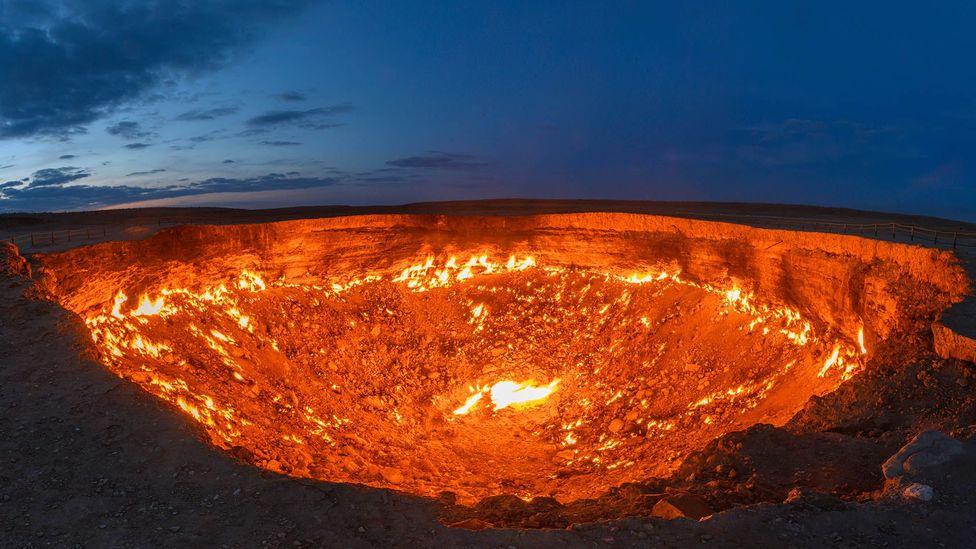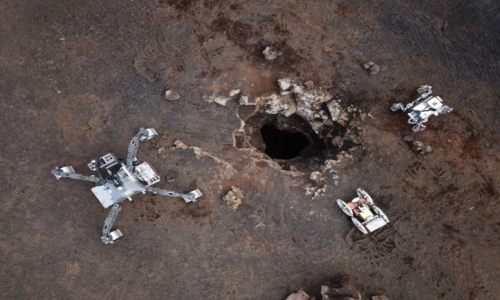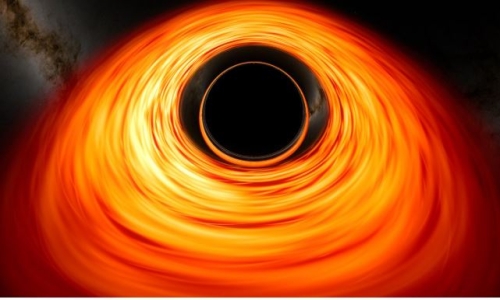


 1:18:39
1:18:39  2023-07-13
2023-07-13  1658
1658

The Darvaza Gas Crater is a large crater in the Karakum Desert of north-central Turkmenistan where thousands of flames fueled by seeping natural gas have been burning for decades. The flaming crater's sights and sounds are frightening enough that local people call it the "Door to Hell" or the "Gates of Hell".
Each dancing flame marks the spot where natural gas (methane) emerges from the walls, from the floor, or from the talus piles within the crater. When the natural gas emerges, oxygen in the atmosphere causes it to burst into flames.
People approaching the crater hear the sound of the flames and feel heat that is too intense to stand at some points along the crater's edge. The heat and an odor of combustion can be sensed for some distance downwind.
The crater is located near the village of Darvaza, also known as Derweze, in north- central Turkmenistan - about 160 miles (260 kilometers) north of the Turkmen capital of Ashgabat.
The crater is about 226 feet (69 meters) across and about 98 feet (30 meters) deep. It has an area that would nearly cover 3/4 of an American football field - including the end zones.
What Causes The Flames?
The flames are caused by natural gas seeping from the surrounding rock into the crater. The gas travels through joints (natural near-surface fractures), permeable rock units, and bedding plane separations.
These are the same pathways that natural gas travels through when entering a drilled well. These delivery paths produce flames along the crater walls and send gas seeping through the talus pile. The result is thousands of small flames throughout the crater.
Natural Gas in Turkmenistan
The United States Energy Information Administration (EIA) reports that Turkmenistan had the world's sixth-largest natural gas resource in 2016 and was one of the world's top 15 natural gas producers in 2015.
The country's production is low compared to its resources because there is little domestic demand, and the country lacks the infrastructure needed for vigorous exports. EIA reports that 70% of Turkmenistan's natural gas exports go to China, Russia, and Iran. The rest goes to other countries around the Caspian Sea or in central Asia.
How Did the Darvaza Gas Crater Form?
The origin of the crater is reported as a natural gas drilling accident on Wikipedia.org and many other websites. While these reports are in general agreement, they do not reference any government, historical, or research documents. They also do not provide a statement from a person who witnessed the crater's formation.
The Darvaza Gas Crater is reported to have formed in about 1971 while Soviet geologists were exploring for oil and natural gas. They began drilling and quickly realized that they had penetrated an underground cavern. Then the ground beneath their equipment began to subside.
The crew managed to escape, but their equipment was lost in the collapse. (Remains of what is thought to be the drilling rig are present on one side of the crater.) Talus from the walls and rim of the crater began falling into the crater. This produced the current shape of the crater: vertical walls beneath the rim, and piles of talus around the circumference of the crater that slope toward the crater's center.
Geologists use the name "sinkhole" for this type of feature - formed when the ground surface sinks or collapses into a cavern. Geologists use the name "crater" for depressions produced by volcanic eruptions or asteroid impacts.
Reality Of Islam |
|

A research

Researchers

If you'
 9:3:43
9:3:43
 2018-11-05
2018-11-05
10 benefits of Marriage in Islam
 7:5:22
7:5:22
 2019-04-08
2019-04-08
benefits of reciting surat yunus, hud &
 9:45:7
9:45:7
 2018-12-24
2018-12-24
advantages & disadvantages of divorce
 11:35:12
11:35:12
 2018-06-10
2018-06-10
 6:0:51
6:0:51
 2018-10-16
2018-10-16
 2:42:26
2:42:26
 2023-02-02
2023-02-02
 8:15:37
8:15:37
 2023-02-16
2023-02-16
 3:43:50
3:43:50
 2022-11-05
2022-11-05
 11:2:27
11:2:27
 2022-10-06
2022-10-06
 3:42:22
3:42:22
 2021-12-24
2021-12-24
 9:30:2
9:30:2
 2021-11-12
2021-11-12
 8:25:12
8:25:12
 2022-03-09
2022-03-09
 5:41:46
5:41:46
 2023-03-18
2023-03-18
| LATEST |